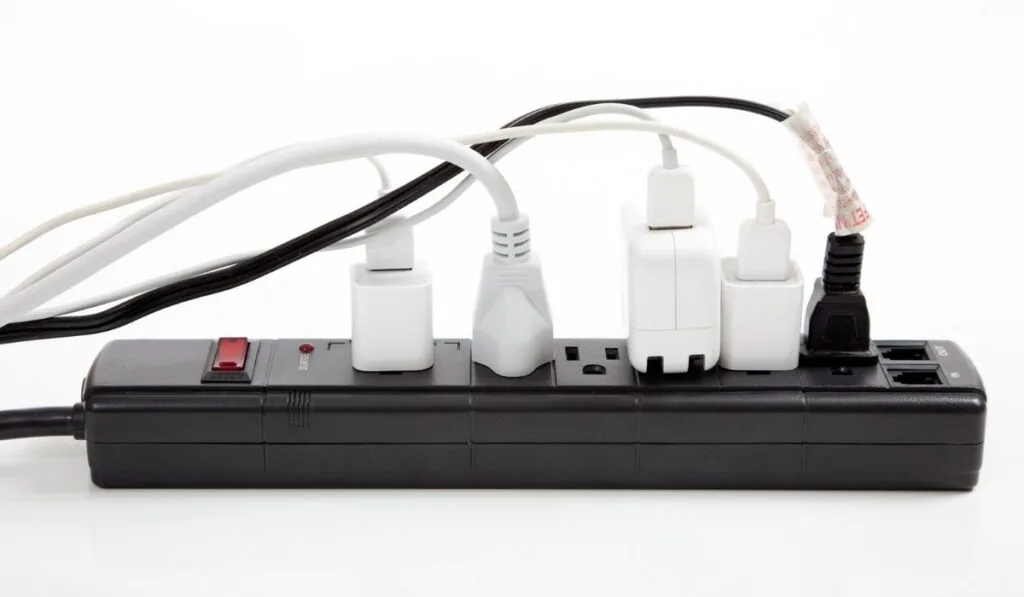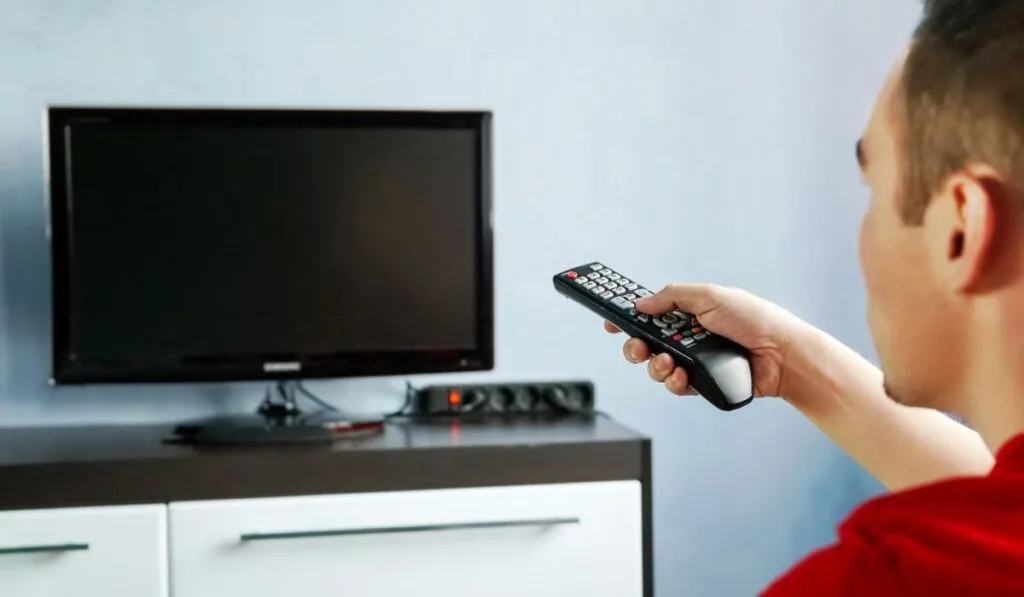Ensuring that your home is protected should always be at the front of your mind. Plans like homeowner’s insurance generally protect you from the big stuff, but what about all your electronics? You may not know this, but power surges are still a fairly common problem. When they happen, it can cause serious damage to your home’s electronics. So how can you protect your appliances?
Use a surge protector to protect your electronics from lightning strikes. A surge protector will help ground any power surges and keep the connected devices safer. A power surge can travel through other cables as well, so make sure all of your electronic devices are connected to a surge protector.
Surge protectors are a super simple way to solve a lot of common problems associated with power surges and lightning strikes. But how do they work? How trustworthy are they? Moreover, is there anything else you can do to protect all the expensive items in your home? Read on to learn more about home electronics and lighting strikes and what you should do to protect your precious devices.
How to Protect Devices from Lightning Strikes

Electrical surges can be a big deal for electronics. While most devices can withstand a small jump in voltage, anything over 169 volts will certainly do some damage. This means almost every electronic you have attached to an outlet is at risk from lightning strikes. So what can you do to protect them?
At the very least, you should have a surge protector for all of your expensive electronic devices. Something like the Panamax 8 outlet surge protector (on Amazon) is perfect for computers, modems, and other items that need continuous power.
You could also consider an uninterruptible power supply (UPS). This APC UPS (on Amazon) is a great choice for enhanced protection.
A plug-in, point-of-use electric surge protector diverts the extra charge from the lighting. It uses your home’s electrical system to run the extra voltage into the ground, saving your electronics from getting fried.
For extra protection, you could even consider installing a surge protector at the service entrance. These will provide protection from power surges coming from the main grid. They’re a great choice for extra protection but are a little bit more involved to install, and will probably require the trained hand of a licensed electrician.
Can Lightning Really Ruin a TV?
With today’s modern electronic-filled world, it’s easy to assume that we don’t have to worry too seriously about the risk of lightning strikes. But here’s the reality; lighting can hit your home and cause serious damage to your devices. This could include completely ruining electronics like your TV.
The height of your home has more to do with how often you may get struck by lightning than anything else. This means that if you don’t have surge protectors, you’re leaving yourself at risk. Lighting is chaotic and unpredictable if nothing else.
Its job is to find the easiest way to the ground. If your home happens to be the spot between lighting and the ground, then you’ll be out of luck.
Will a Surge Protector Protect a TV From Lightning?

Against the power of nature, it might not seem like you’ve got a chance. Fortunately, just like we’ve figured out how lighting works, we’ve figured out how to protect ourselves for the most part.
While you could go and get something extreme like a lighting rod to put on your roof, surge protectors offer a much simpler method that follows a similar design principle.
A surge protector is perfect for shielding a TV from lighting strike-related damage. They will simply divert the extra voltage toward your home’s ground instead of your screen.
What Type of Surge Protector is Best for a TV?
Shopping online, you can easily find all kinds of surge protectors on the market. But which one is best for the job? Do different models offer different features or extra protection? Given how prices can range so greatly, these are some fairly common questions.
Most surge protectors will do a sufficient job protecting your appliances. Just make sure you are buying an actual surge protector, like this Panamax Surge Protector (on Amazon). Just because a model has extra outlets doesn’t mean it will protect your gear; it could just be a power strip — so be careful.
A good rule of thumb for finding surge protectors is to look for an indicator light, and don’t buy the cheapest one. All surge protectors will feature a light, usually red, to indicate that it’s working. If the light isn’t turning on, or the device doesn’t have one, to begin with, it’s not doing anything to protect your TV from a surge.
Should You Turn Off your TV During a Thunderstorm?

If you are concerned about keeping your electronics safe, you may have considered taking extra steps to protect your appliances. Surge protectors might be the first step, but what else can you do to keep your stuff safe?
Often, the first thing that comes to mind is keeping things turned off during the peak risk time (i.e., during a thunderstorm). But while you might think that turning your TV off during a storm will keep it safe, that’s not the case. In reality, if the device is still connected, it’s going to be at risk of power surges. The only way to provide safety is with a surge protector.
Another way that people protect their devices is by unplugging them. While this might not work for items that require continuous power, like a computer, it’s great if you’re in the heart of a storm and you’re worried about your appliances. In fact, if you’re evacuating your house due to extreme weather, like a hurricane, it’s probably safer to unplug your appliances before you leave just in case.
Can You Fix a TV After a Lightning Surge?
While electrical surges can fry electronics, sometimes that’s not the case. If you’ve experienced a power surge and your TV is still working, but there’s something little…off about it, what can you do? Fortunately, you’ve got some options when it comes down to fixing common issues that plague TVs after a power surge.
The first thing you’ll want to try is to turn off and unplug your TV. Leave it unplugged long enough for any residual charge to leave the device. This can take a few minutes, so turn everything off, unplug the device, and wait around 15 mins.
If you turn it on and still see some obvious issues with the screen quality, you can try a factory reset. Here is how you do that:
- Find the Menu option on your TV’s remote or main controls.
- Under the Menu, you should find Options or Advanced Options.
- From here, move through the pages until you find the Factory Reset option.
- Click the Factory Reset and move through the on-screen guide.
- You’ll need to confirm several times during this process.
- Once finished, your TV may turn on and off to complete the process.
After the reset, if you still are having problems, contact a local appliance repair specialist.
Wrapping Up
When it comes to TVs and power surges, you should always be aware of the possible risks. While some surges won’t cause fatal damage, others might. That’s exactly why you need to stay protected.
The best way to do that is to use a surge protector. These easy-to-install and cost-effective devices can save you from waking up after a storm to a batch of fried electronics.
